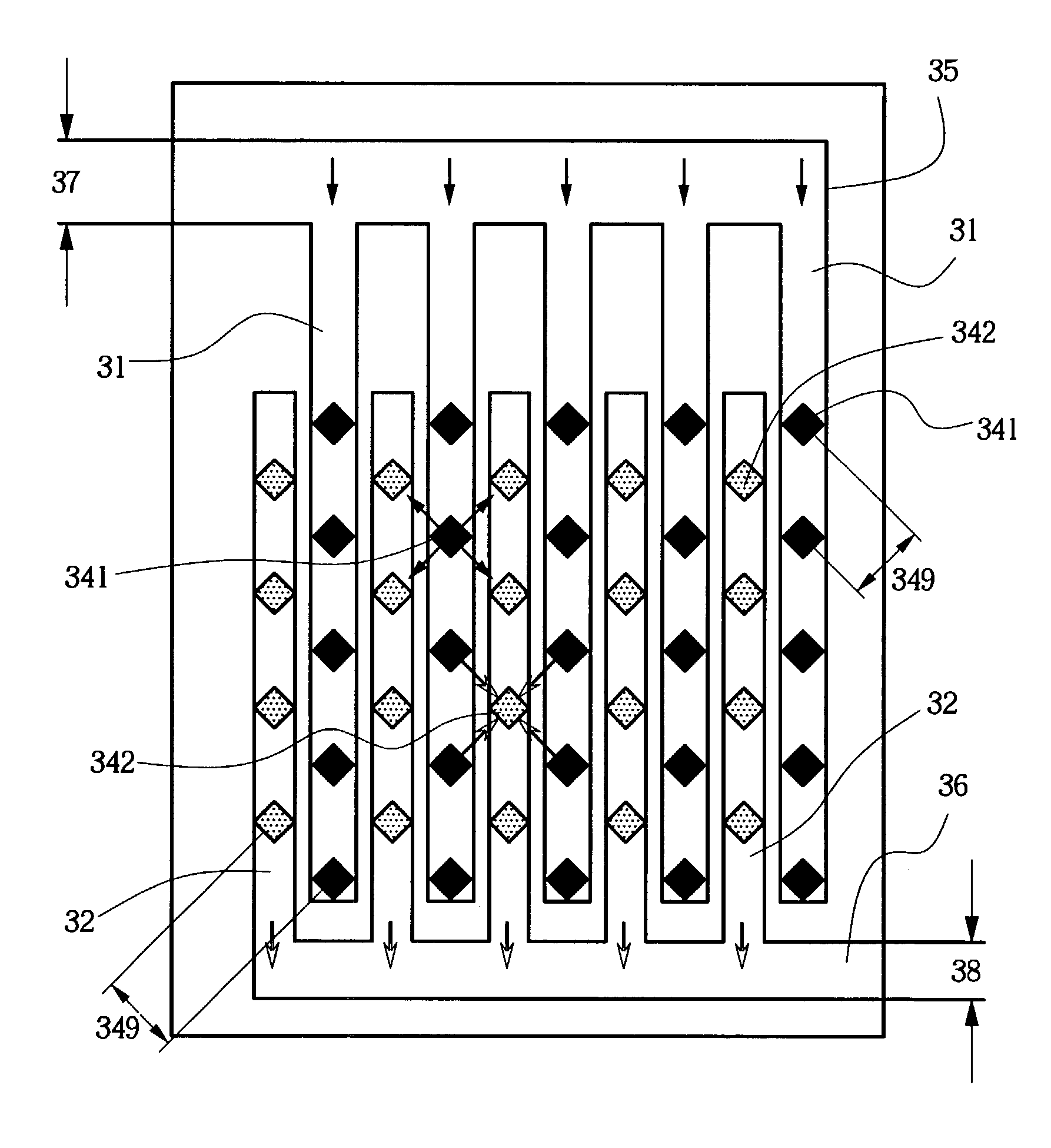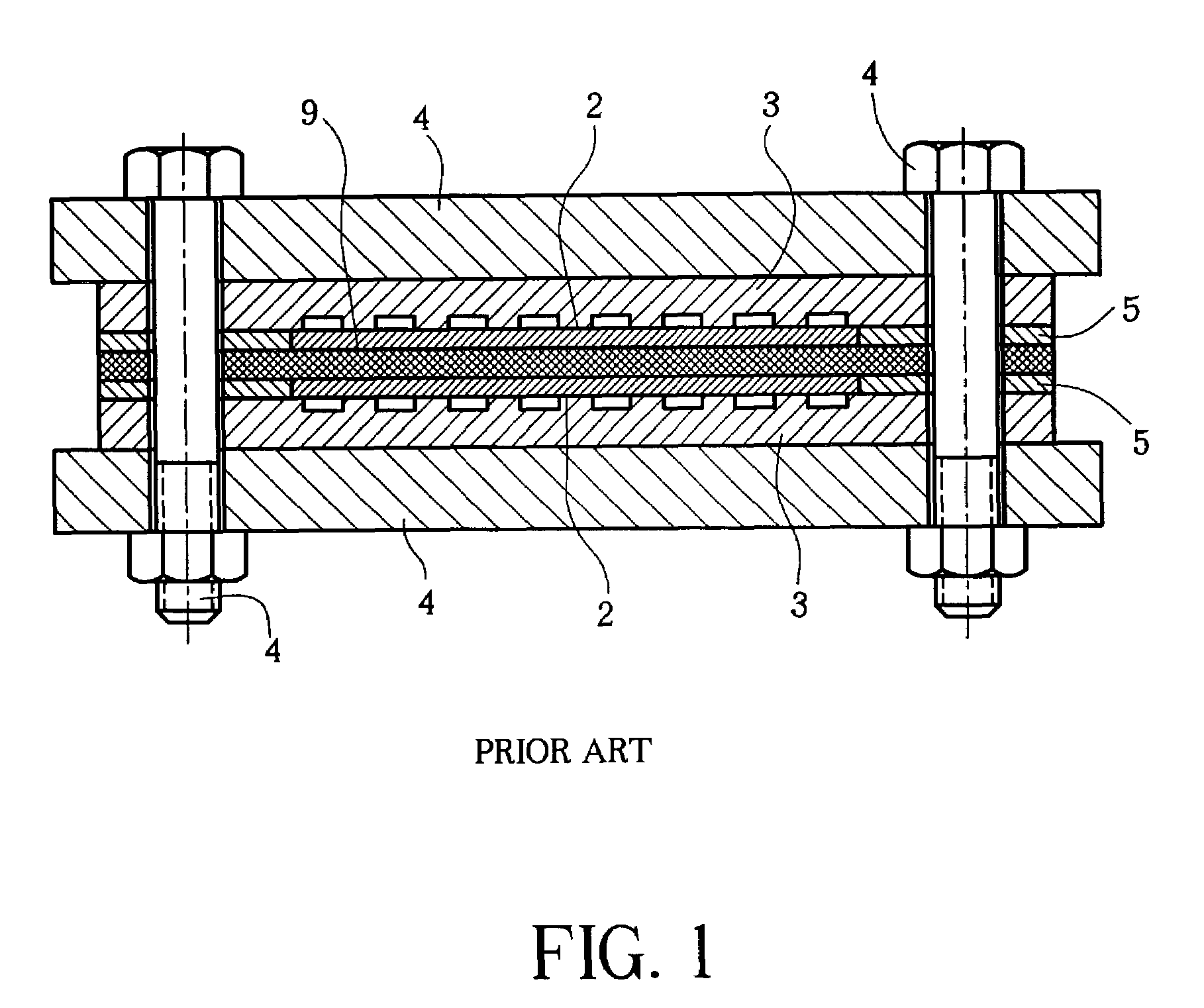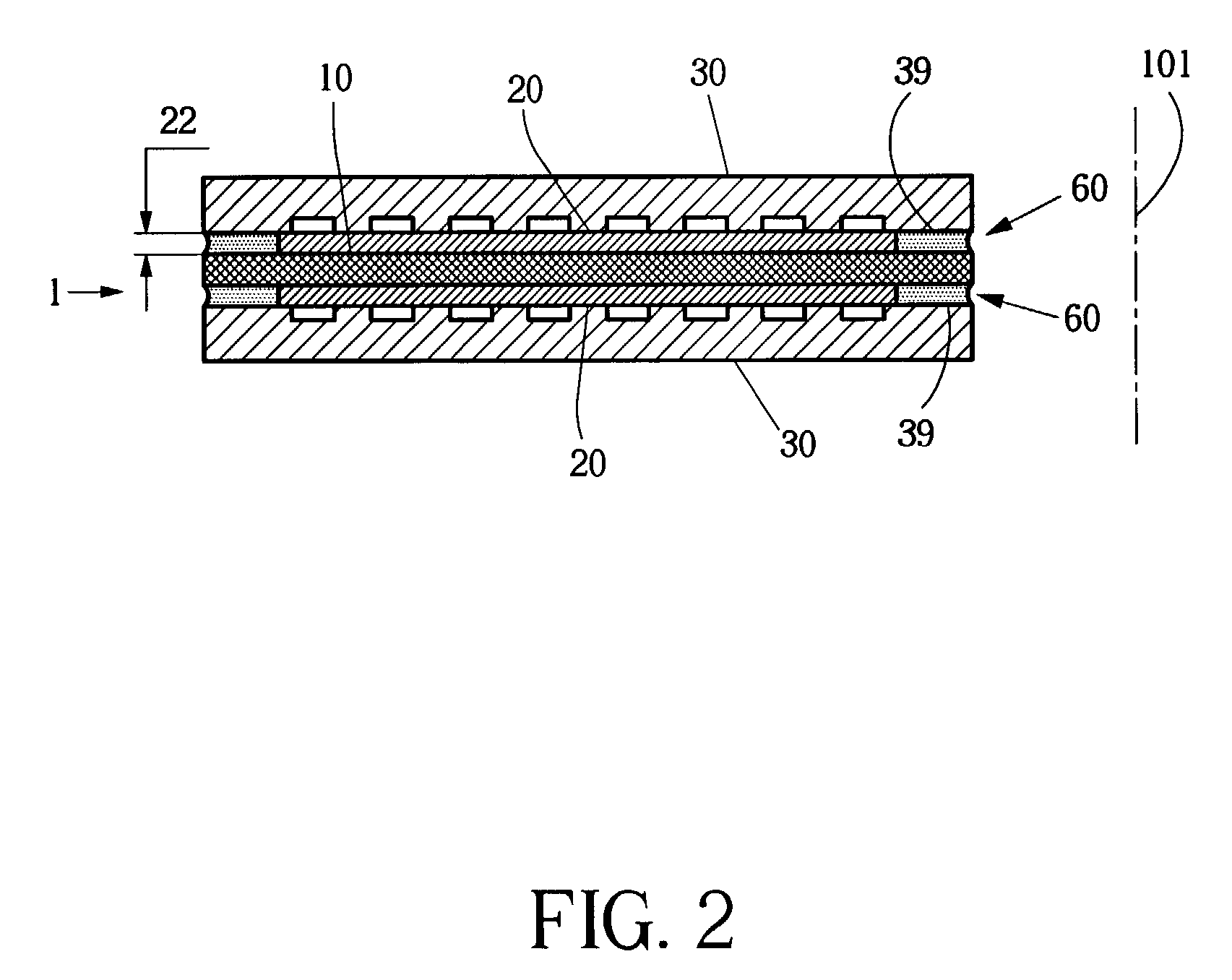Fuel cell
a fuel cell and cell technology, applied in the field of fuel cells, can solve the problems of increasing the over all size of the fuel cell, increasing the complexity and fabrication cost, and introducing severe assembly challenges for the bonding of membrane electrolyte with pure adhesives, and achieving the effect of enabling design flexibility and complexity reducing the cost of pure adhesives, and increasing the durability of the fuel cell assembly
- Summary
- Abstract
- Description
- Claims
- Application Information
AI Technical Summary
Benefits of technology
Problems solved by technology
Method used
Image
Examples
Embodiment Construction
[0068]In the present invention novel design configurations and fabrication methods for compact fuel cells with high power density are described. Referring to FIG. 2, a basic fuel cell device 1 in accordance with the present invention includes an ion-conducting electrolyte membrane 10 between two electrodes 20, backed by backing layers or backing structures 30. The backing structures feature flow distribution channels 31, 32, 35, 36, 37, 38 (see FIGS. 3-11) for fluid supply and fluid exhaust. A catalyst on one electrode promotes separation of ions and electrons at the fuel side. Only the ions conduct through the electrolyte, and recombine with electrons at the oxidant side. The electrons are conducted through an external circuit, thus supplying electrical power. The layers of the fuel cell 1 are assembled along the assembly axis 101.
[0069]For ease of the invention the numerous aspects of the invention are initially described in separate chapters. Cross dependency of the individual as...
PUM
| Property | Measurement | Unit |
|---|---|---|
| Electrical conductance | aaaaa | aaaaa |
| Height | aaaaa | aaaaa |
| Sensitivity | aaaaa | aaaaa |
Abstract
Description
Claims
Application Information
 Login to View More
Login to View More - R&D
- Intellectual Property
- Life Sciences
- Materials
- Tech Scout
- Unparalleled Data Quality
- Higher Quality Content
- 60% Fewer Hallucinations
Browse by: Latest US Patents, China's latest patents, Technical Efficacy Thesaurus, Application Domain, Technology Topic, Popular Technical Reports.
© 2025 PatSnap. All rights reserved.Legal|Privacy policy|Modern Slavery Act Transparency Statement|Sitemap|About US| Contact US: help@patsnap.com



